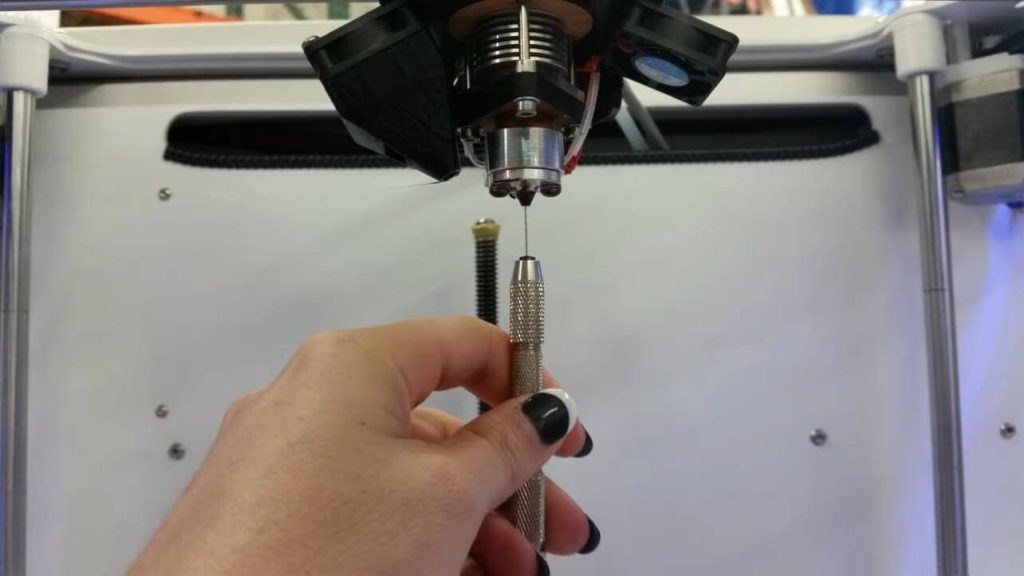
As an important part of any 3D printer, it is crucial that the nozzle remains clean. Read on to learn more about cleaning 3D printer nozzles!
Where everything goes down
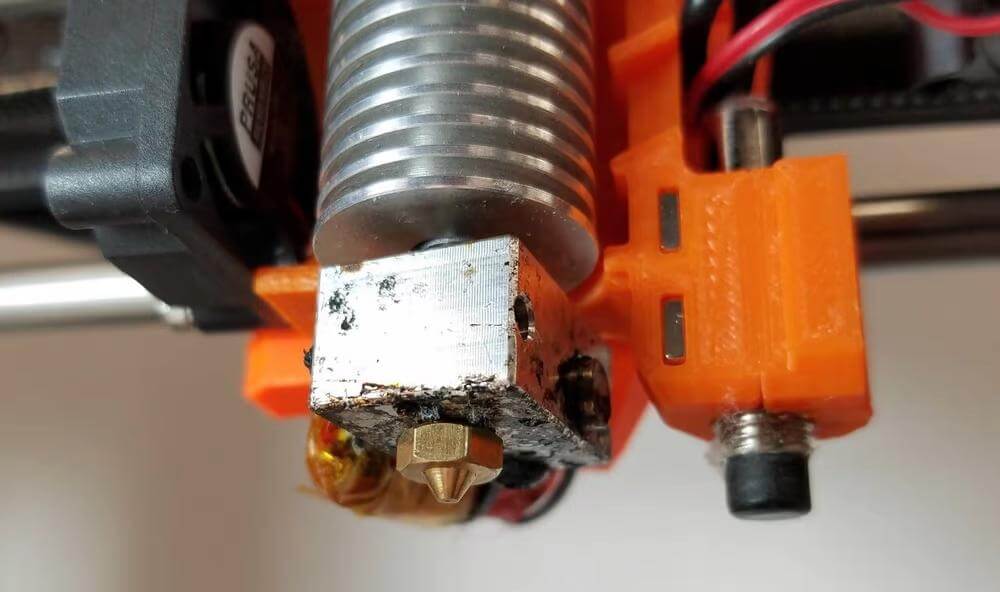
On FDM 3D printers, many parts contribute to the creation of a model, but the nozzle is perhaps one of the most important. There, the molten material comes out of the hot end. If you are not familiar with this component - it usually has a thread to connect to the hot end, on the other side, a smaller hole through which the thread is pushed.
The nozzle is so important because it affects the extrusion of the printer and if it is not working properly, it can cause a lot of printing problems. Also, not all nozzles are created equal. The material, diameter and other characteristics determine its characteristics and service life.
Nothing lasts forever, including nozzles. They break down over time, especially when they get dirty, clogged, or overused. That's why it's critical to regularly clean your printer's nozzle and make sure it's working well with the other hot-end components of the printhead assembly. This will extend the life of your nozzle.
In this article, we'll look at how to clean your nozzle and prevent problems from occurring, as well as troubleshoot any issues that could be putting your printer out of commission. Let's dive in.
Identify the problem
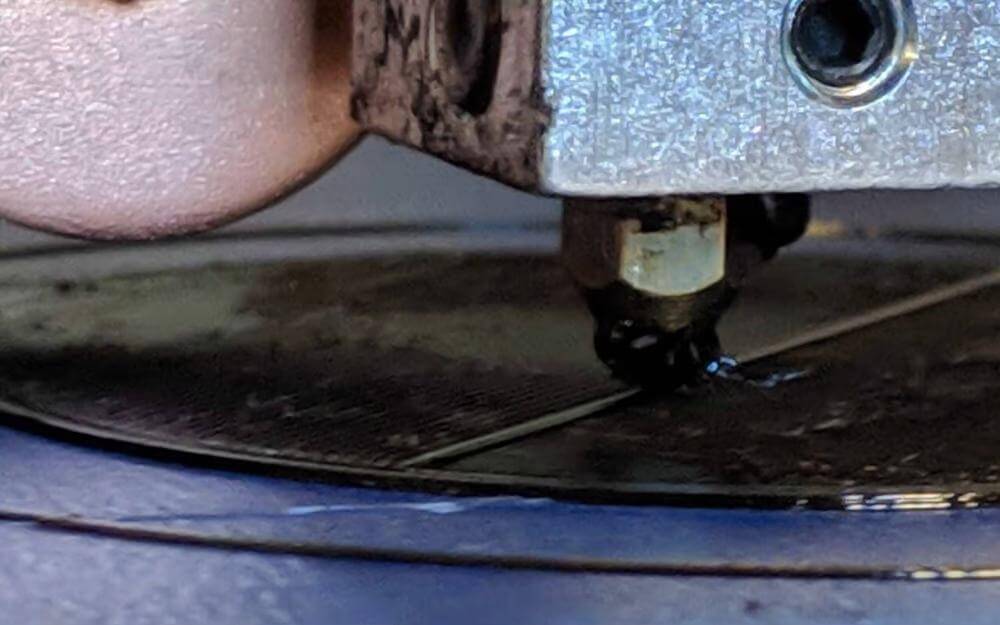
Before we get down to cleaning your nozzle, it's important to make sure that in fact the nozzle is the problem. Listed below are a few problems that can be caused by a dirty nozzle. For each of these, we've included other factors to check before determining that the nozzle is the problem:
- Without first layer: If you've started printing and you don't see a filament coming out of the first layer nozzle, this may be due to a clogged nozzle. However, it is worth checking that this problem is not caused by the extruder, the Z offset setting, or an uneven bed.
- The nozzle picks up the printed material: This problem is when your nozzle puts down some material, then accidentally picks it up as it moves across the layer. Usually the nozzle is the only cause of this problem, but make sure you have the proper Z offset and level as well.
- Congestion at the hot end: Traffic jams in hot end often look like the thread is stuck or caught in the middle and bottom of the hot end. Since the tip is a hot end component, it may be responsible for a jam, but also be sure to check that the hot end path (eg PTFE pad) is not the cause.
- Inconsistent extrusion: Inconsistent extrusion usually looks like your printer can't handle extruding material. It extrudes material in sudden bursts when it needs to extrude an even amount of material consistently. However, make sure that this problem is not caused by a wet filament or the extruder's stepper motor (specifically its power).

- Sub-extrusion: Sub-extrusion is similar to the previous one, but is a more moderate version that produces a print with obvious missing parts. Be sure to also check that the problem isn't caused by wet material, loose extruder tension, or a bumpy filament path.
- Missing seal: If you start a print and return to a "finished" print with only a few (if any) layers printed, this could be caused by a clogged nozzle. Don't forget to also check that your filament diameter is correct, the print temperature is within the manufacturer's material limits, and the extruder is spinning (It's okay if no filament comes out, but make sure the extruder motor is running) .
As we said, it is imperative to first diagnose the source of the problem. While cleaning the nozzle is usually not a bad idea, it may not solve the problems you are experiencing. A good idea to effectively troubleshoot a printing problem is to look at each potential cause of the problem. Then, going from the easiest to check to the most difficult, look at each possible cause to find the real culprit.
Once you are sure that the printing problem you are experiencing is due to a dirty nozzle, move on to the cleaning methods.
External debris
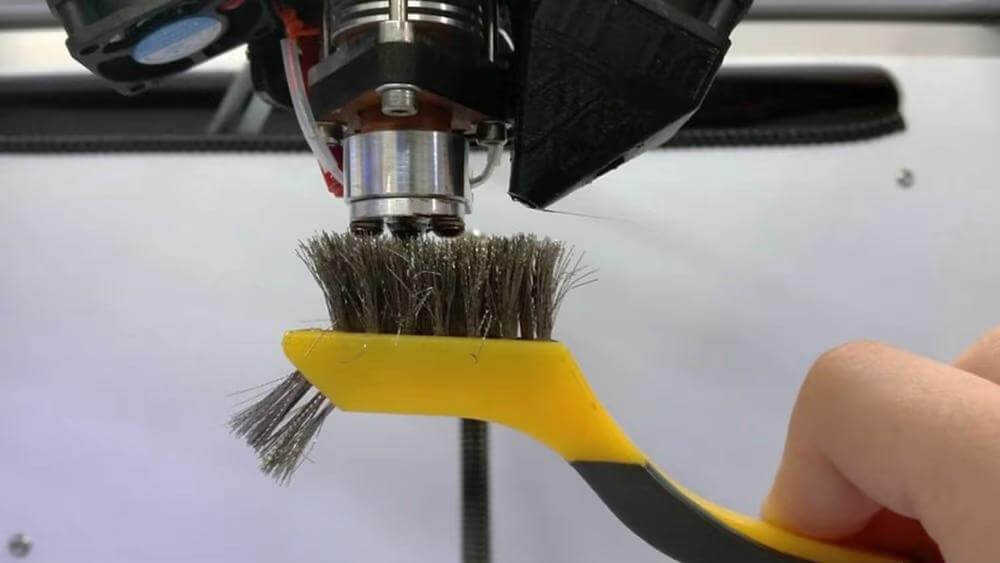
Debris on the outside of the nozzle is the most visible of all nozzle problems. Debris is usually excess molten material that has stuck to the nozzle during printing.
Although this problem is almost always caused by the nozzle being too low - often when printing the first layer, the problem is exacerbated. Basically, as the filament flows out of the nozzle, some sticks to the side of the nozzle and as the filament continues to flow, it picks up more of the original material stuck to the outside of the nozzle.
Solutions
First, clean the nozzle with a damp cloth or alcohol wipe while the nozzle is hot. This may cause steam, but it will really remove any material stuck to the nozzle. If that doesn't work, you can also use a wire brush, small blade, or needle to remove any remaining debris from the nozzle.
While this cleans the outside of the nozzle, it is best to prevent any material from getting onto the nozzle. So, consider increasing the Z offset and flattening the print base. It also helps to use a silicone sock that covers most of the nozzle and prevents too much material from sticking.
Clogging
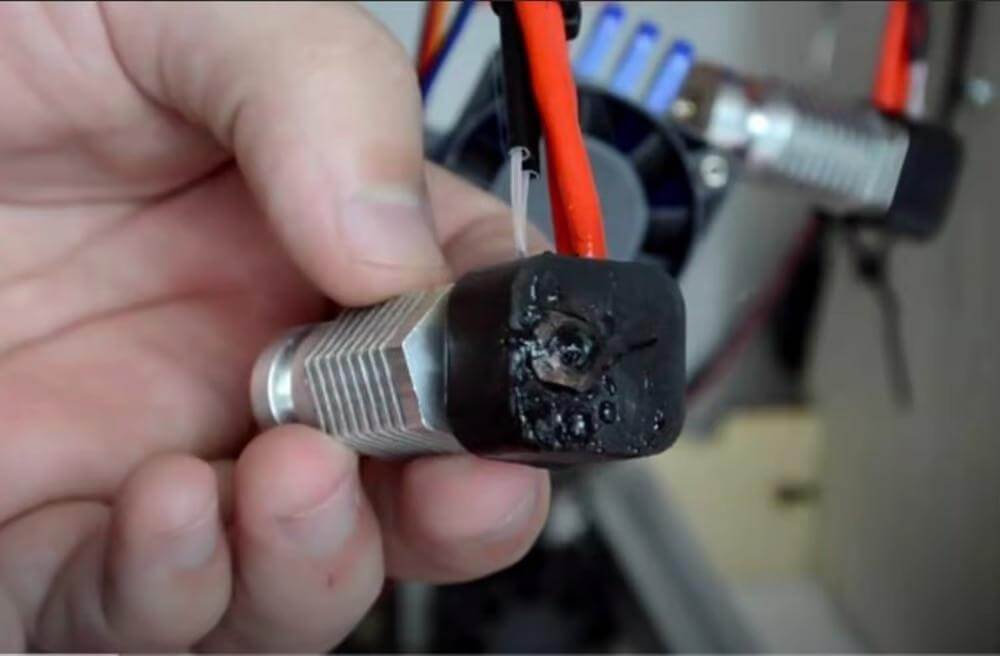
Clogging is probably the most common problem with nozzles. These occur when debris inside the hot end blocks the nozzle exit, preventing the filament from exiting (resulting in under-extrusion or worse - missing prints).
There are two types of nozzle blockages: partial blockages and complete blockages. As you might guess, fulls are the worst kind of clogs. The debris blocks the entire exit hole, thus trapping the filament in the extruder. Partial blockages occur when debris blocks only part of the outlet. Although less bad than full clogs, you should clean your nozzle if you have this problem.
Solutions
There are several methods of clearing nozzle clogs, and we'll look at three of them. The first and easiest is to stick a small needle into the hot nozzle to break and push out the debris.
The second method is to perform a cold draw, which removes the debris entirely from the hot end. Contact us - 3MG Bonev Ltd. to give you detailed advice on how to implement cold cleaning without any problems.
The third method is to completely replace your clogged nozzle. This method is painless from an economic point of view if you use ordinary brass nozzles, since they are cheap. For this method, start by heating the hot end to melt the hardened material stuck in the nozzle. Also be sure to remove any threads that feed into the extruder.
Once the clogged thread is softened by the heat, unscrew the nozzle from the hot end. Before attaching the new nozzle, be sure to clean the hot end to remove any excess thread stuck in the fitting.
PTFE Tube Hot End Gap
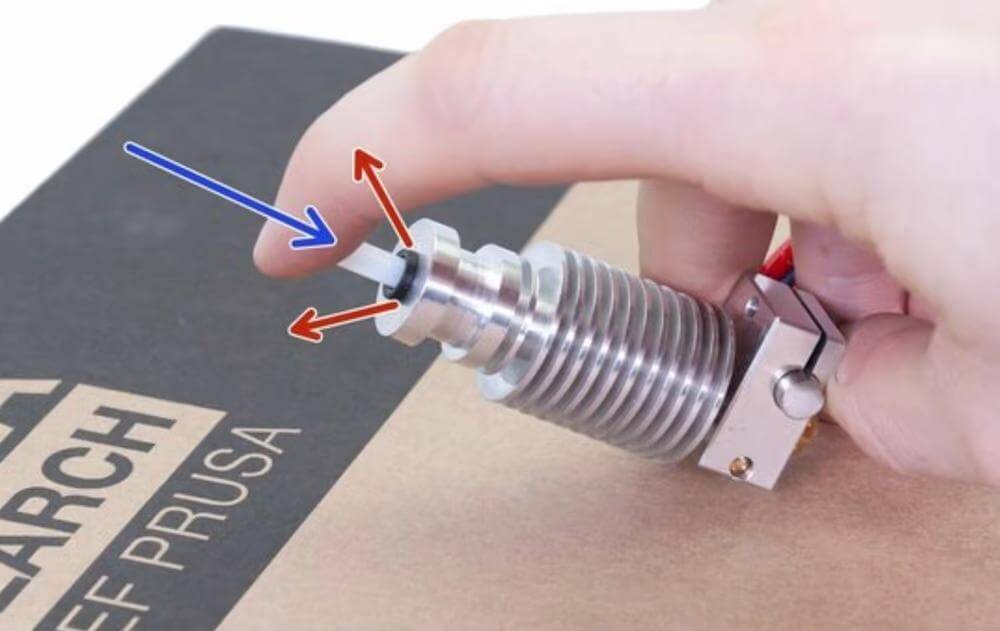
The distance between the PTFE tube and the top of the nozzle can also cause problems. Leaks can occur due to an uneven end of the PTFE tubing, when the tubing is not pushed down far enough into the hot end, or when the nozzle is not screwed into the hot end far enough to be flush with the tubing.
If there is a gap, the melted filament will fill that gap. When the material cools, it will completely plug the hot end. This can occur in both PTFE-lined and all-metal hot ends.
Solutions
First remove the PTFE tubing from the hot end (if possible), then screw the nozzle almost all the way in (about 95% in). After checking that the PTFE end is flat and the PTFE connector (which holds the tube) is securely screwed into the hot end, place the tube down into the hot end.
Finally, screw the ferrule into the hot end to achieve a tight seal between it and the PTFE tubing.
Replacements and upgrades
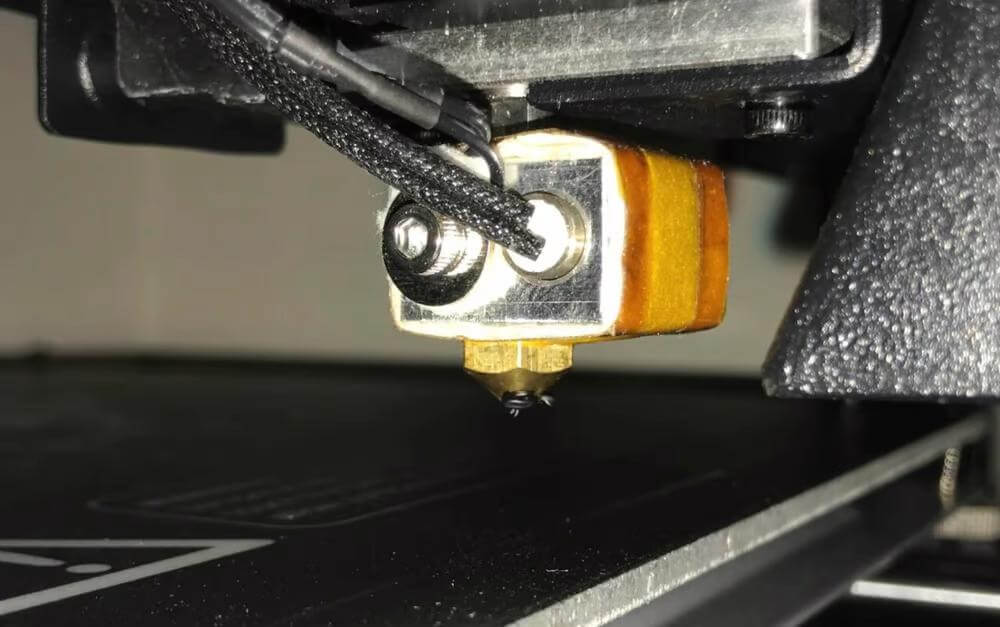
If none of these solutions work, or you simply suspect that your nozzle has deteriorated significantly and no amount of cleaning will help, it may be time to get a new one.
As mentioned earlier, nozzles differ in material, diameter and other factors. These characteristics affect what the nozzle can handle in terms of printing and how the prints will turn out. For example, abrasive materials, such as phosphorescent or composite materials (having wood particles in them), significantly accelerate the wear of lower quality nozzles.
In the next few sections, we'll talk about two important things to consider when replacing or upgrading your 3D printer nozzle: diameter and material.
Nozzle diameters

0.2 mm
0.2mm diameter output hole – will allow you to print items with more detail. This is a great size for printing items such as thumbnails. However, it is important to note that prints will take longer and are usually weaker as they have more lines to print.
0.4 mm
0.4mm diameter is the industry standard for consumer 3D printers. This size offers a great combination of detail, strength and print time.
1.0 mm
A nozzle with this diameter allows you to print much faster. Prints will also be stronger as they will have fewer print lines, but this comes at the expense of print detail.
Nozzle materials

Brass
Brass is the most popular material for nozzles and is also the cheapest. They are so cheap that you can buy 25 universal ones for less than $10.
As you might expect, this nozzle material usually has the shortest life as it wears out the fastest. Brass nozzles are best suited for printing non-abrasive materials such as PLA, ABS and PETG. However, this nozzle material will degrade significantly faster when used with abrasive materials.
Steel
Steel nozzles (including hardened and stainless steel) are one step above brass nozzles. Nozzles made of this material cost more than brass nozzles, but have a longer life and a higher maximum temperature. In addition to non-abrasive materials, steel nozzles can also handle light use of abrasive materials before deteriorating significantly.
Ruby Peak
Ruby nozzles are the crème de la crème of nozzles and are made from a conductive base material (usually brass) with a ruby tip. Because ruby is a gemstone that is extremely durable and abrasion resistant, ruby tip nozzles can handle basically all materials and last for years. The downside, however, is how expensive ruby nozzles can be, costing around $100 apiece.
0 Comments